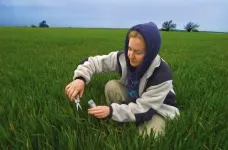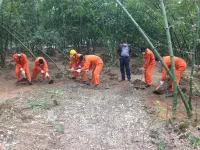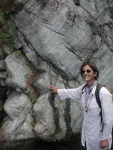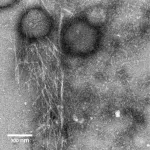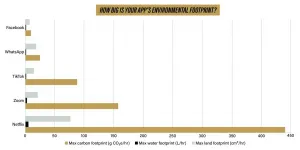(Press-News.org) New research from CU Cancer Center member Jing Hong Wang, MD, PhD, and recent University of Colorado Immunology program graduate Rachel Woolaver, PhD, may help researchers develop more effective personalized immunotherapy for cancer patients.
Working within Wang's specialty of cancer immunology and head and neck squamous cell carcinomas (HNSCCs), the researchers worked to establish a mouse model that would help them understand why some hosts' immune systems reject tumors easily, while others have a harder time doing so. Their research was published last week in the Journal for ImmunoTherapy of Cancer.
"It's particularly interesting now because the field of cancer treatment has really been going in the direction of immunotherapy, where you give drugs that can reactivate the immune system and get it to kill the tumors on its own," Woolaver says.
That's in contrast to chemotherapy and radiation, which can kill other cells along with tumor cells. "We're just trying to figure out how can we contribute to the field of understanding what causes heterogeneity (differences) in anti-tumor immune responses," she says.
Wang, Woolaver and other cancer researchers on the Anschutz Medical Campus started the research by transplanting HNSCC tumors into genetically identical mice. Theoretically, their response to the cancer would be identical, but it turned out that 25% of the mice spontaneously rejected the tumor. The researchers started looking more closely at both the mice and the tumor cells to try to understand what was causing the mice to kill the cancer on their own.
What they discovered is that it all depended on the types of the immune cells known as CD8 T cells that were present in the mouse. Even identical twins have different T cells due to the random DNA recombination event generating these T cells, Wang explains, so the genetically identical mice had different arrays of the T cells as well. The mice's response to cancer depended on how their specific T cells matched up with the set of mutated proteins known as neoantigens that were present in the tumor they were fighting.
"Each of your T cells has a different receptor, and each T cell will be specific to a neoantigen," Woolaver says. "If you have T cells that are specific to all of them or majority of them, you're going to be able to get rid of your tumor and have a good anti-tumor immune response."
What the researchers showed in the publication, Wang explains, is that the mice that spontaneously rejected tumors had vastly different T cell receptors from those that succumbed to tumor development.
For the next phase of their research, Wang and her team members plan to study how to enable a cancer patient to develop a more diverse T cell response so they have a better chance of successfully fighting off a tumor.
"Because patient tumors are very heterogenous from each other, it's very difficult to study them," Woolaver says. "In our paper, we characterize a new model of tumor heterogeneity that has a lot of interesting immunological aspects that we can study to try to help improve the immune response to cancer."
Wang adds that the research can be important in developing new types of immunotherapy.
"I don't think it's well recognized in the field that intrinsic differences in the immune system can make an impact," Wang says. "Most people just focus on 'Why are all the T cells not activated,' or 'The T cells are exhausted,' or something like that. But maybe a patient doesn't have the right T cells from the beginning. If they don't have the right T cells that can recognize neoantigens, how can they have the effective anti-tumor immune response?"
INFORMATION:
Researchers at the UC Davis Violence Prevention Research Program (VPRP) assessed the prevalence of exposure to violence, such as robbery or assault, and its impacts on the mental health and social functioning of California adults. Their study, published in the Journal of Interpersonal Violence, shows the far-reaching psychological effects an incident of gun violence can have on victims and those close to them.
The study's findings are based on data from 2,558 adults who responded to the 2018 California Safety and Wellbeing Survey (CSaWS). CSaWS is an ongoing survey research project on firearm ownership and the consequences of exposure to violence in California. Responses were weighted to be statistically representative of the state's adult population.
These ...
Primer on Carbon Dioxide Removal Provides Vital Resource at Critical Time
--By Julie Chao
Scientists say that any serious plan to address climate change should include carbon dioxide removal (CDR) technologies and policies, which makes the newly launched CDR Primer an especially vital resource, says Berkeley Lab scientist Margaret Torn, one of about three dozen scientists who contributed to this document.
"Atmospheric CO2 concentrations are already 50% over historic natural levels - 270 ppm (parts per million) in pre-industrial times vs 414 ppm today," said Torn. "To slow climate change and avoid its worst impacts, climate scientists tell ...
MADISON, Wis. -- As a new, apparently more transmissible version of the virus that causes COVID-19 has appeared in several countries, new research finds that the transmissibility of viral strains and the population density of a region will play big roles in how vaccination campaigns can help towns and cities return to more normal activities.
The findings suggest that directing vaccines toward densely populated counties would help to interrupt transmission of the disease. Current vaccination distribution plans don't take density into account.
Tony Ives at the University of Wisconsin-Madison and Claudio Bozzuto of the independent data research company Wildlife ...
Researchers from the University of Cambridge, the University of Milan and Google Research have used machine learning techniques to predict how proteins, particularly those implicated in neurological diseases, completely change their shapes in a matter of microseconds.
They found that when amyloid beta, a key protein implicated in Alzheimer's disease, adopts a highly disordered shape, it actually becomes less likely to stick together and form the toxic clusters which lead to the death of brain cells.
The results, reported in the journal Nature Computational Science, could aid in the future development of treatments ...
Decades after the industrialized world largely eliminated lead poisoning in children, the potent neurotoxin still lurks in one in three children globally. A new study in Bangladesh by researchers at Stanford University and other institutions finds that a relatively affordable remediation process can almost entirely remove lead left behind by unregulated battery recycling - an industry responsible for much of the lead soil contamination in poor and middle-income countries - and raises troubling questions about how to effectively eliminate the poison from children's bodies.
"Once the lead is in the environment, it stays there pretty much indefinitely ...
A new University of Saskatchewan (USask) study has found that stretching is superior to brisk walking for reducing blood pressure in people with high blood pressure or who are at risk of developing elevated blood pressure levels.
Walking has long been the prescription of choice for physicians trying to help their patients bring down their blood pressure. High blood pressure (hypertension) is a leading risk factor for cardiovascular disease and among the top preventable risk factors affecting overall mortality.
This new finding, published December 18, 2020 in the Journal of Physical Activity ...
On a beach on a remote island in eastern Papua New Guinea, a country located in the southwestern Pacific to the north of Australia, garnet sand reveals an important geologic discovery. Similar to messages in bottles that have traveled across the oceans, sediments derived from the erosion of rocks carry information from another time and place. In this case the grains of garnet sand reveal a story of traveling from the surface to deep into the Earth (~75 miles), and then returning to the surface before ending up on a beach as sand grains. Over the course of this geologic journey, the rock type changed as some minerals were changed, and other materials were included (trapped) within the newly formed garnets. The story is preserved ...
An antibacterial peptide that turns on and off
The researchers solved the 3D molecular structure of an antibacterial peptide named uperin 3.5, which is secreted on the skin of the Australian toadlet (Uperoleia mjobergii) as part of its immune system. They found that the peptide self-assembles into a unique fibrous structure, which via a sophisticated structural adaptation mechanism can change its form in the presence of bacteria to protect the toadlet from infections. This provides unique atomic-level evidence explaining a regulation mechanism of an antimicrobial ...
WEST LAFAYETTE, Ind. -- It's not just to hide clutter anymore - add "saving the planet" to the reasons you leave the camera off during your next virtual meeting.
A new study says that despite a record drop in global carbon emissions in 2020, a pandemic-driven shift to remote work and more at-home entertainment still presents significant environmental impact due to how internet data is stored and transferred around the world.
Just one hour of videoconferencing or streaming, for example, emits 150-1,000 grams of carbon dioxide (a gallon of gasoline burned from a car emits about 8,887 grams), requires 2-12 liters of water and demands a land area adding up to about the size of an iPad Mini.
But leaving your camera off during a web call can ...
January 14, 2021 - Orthopaedic surgeons have traditionally been taught that certain types of knee symptoms indicate damage to specialized structures called the menisci. But these "meniscal" and "mechanical" symptoms do not reflect what surgeons will find at knee arthroscopy, reports a study in The Journal of Bone & Joint Surgery. The journal is published in the Lippincott portfolio in partnership with Wolters Kluwer.
Both types of symptoms are strongly related to the overall amount of cartilage damage in the knee joint - but not to the presence of meniscal tears, according to the new research ...
